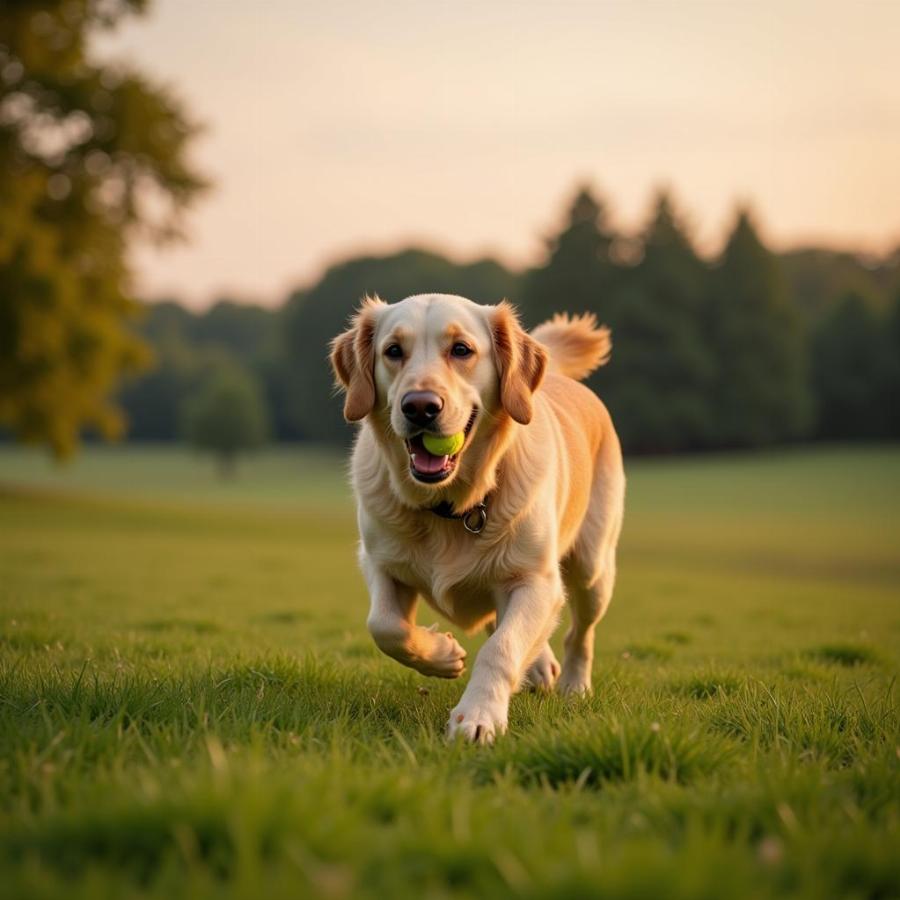Has your usually independent furry friend suddenly transformed into a four-legged shadow, glued to your side? While dogs are naturally social creatures who enjoy our companionship, a sudden and drastic increase in clinginess can be a sign that something is amiss. This behavior change can be perplexing, even a little concerning, for pet parents. Understanding why your dog is suddenly so clingy is the first step to addressing it and ensuring your furry friend feels safe and secure.
Decoding the Clingy Canine: Possible Reasons
There are numerous reasons why your dog might become unusually clingy. Some are harmless and temporary, while others might signal an underlying issue that requires attention. Let’s delve into some of the most common culprits:
1. Medical Concerns: Any sudden change in behavior, including increased clinginess, warrants a visit to the veterinarian. Pain, discomfort, or a change in senses (like vision or hearing loss) can make your dog feel vulnerable, leading them to seek comfort and reassurance from you.
2. Anxiety and Stress: Just like humans, dogs experience anxiety and stress. Changes in routine, a new home, loud noises (like fireworks or thunderstorms), or even the introduction of a new pet or family member can trigger anxiety, making your dog seek your comforting presence.
3. Separation Anxiety: This is a more serious form of anxiety where dogs become extremely distressed when separated from their owners. Dogs with separation anxiety often display extreme clinginess, destructive behavior, or vocalization when left alone.
4. Attention-Seeking Behavior: Sometimes, dogs become clingy simply because they’ve learned that it gets them attention. If you’ve inadvertently rewarded clingy behavior in the past (by giving treats, cuddles, or playtime), your dog may continue to exhibit this behavior to get more of those good things.
5. Environmental Factors: Changes in your dog’s environment can also contribute to clinginess. A lack of mental or physical stimulation, boredom, or a change in weather can all influence their behavior.
Addressing the Clinginess: What Can You Do?
1. Rule Out Medical Issues: The first and most crucial step is to schedule a check-up with your veterinarian. They can determine if there are any underlying health problems contributing to the clinginess.
2. Create a Safe and Secure Environment: Ensure your dog has a comfortable and safe space where they feel secure, especially when you’re not home. Provide them with a cozy bed, familiar toys, and consider using a pheromone diffuser to create a calming atmosphere.
3. Positive Reinforcement: Reward your dog for independent behavior. When they choose to settle down on their own or engage in a solo activity, offer praise, a treat, or a favorite toy. This positive reinforcement encourages them to feel more confident when they’re not attached to your side.
4. Gradual Desensitization: If your dog’s clinginess is related to separation anxiety, gradual desensitization training can be beneficial. This involves slowly acclimating them to being alone for progressively longer periods. Consult with a certified dog trainer or behaviorist for guidance tailored to your dog’s specific needs.
5. Address Attention-Seeking Behavior: Avoid inadvertently reinforcing clinginess. If you suspect your dog is being clingy for attention, try to ignore the behavior (as long as it’s safe to do so) and only reward them with attention when they are calm and relaxed.
6. Enrichment is Key: A bored dog is more likely to engage in attention-seeking behaviors, including clinginess. Ensure your furry friend gets plenty of mental and physical stimulation. Daily walks, interactive playtime, puzzle toys, and training sessions can help keep them engaged and content.
When to Seek Professional Help
If your dog’s clinginess is severe, causing them significant distress, or if you suspect separation anxiety, it’s essential to seek professional help from a certified dog trainer or veterinary behaviorist. They can provide you with a customized training plan and support to address your dog’s specific needs.
FAQ: Common Questions about Clingy Canine Behavior
1. Is it normal for my dog to be clingy sometimes?
Yes, it’s perfectly normal for dogs to want to be close to their humans. It’s in their nature to seek companionship. However, if the clinginess is sudden, extreme, or accompanied by other behavioral changes, it’s worth investigating further.
2. Can spaying or neutering my dog help with clinginess?
While spaying or neutering can help reduce hormone-driven behaviors, it’s unlikely to completely eliminate clinginess if it’s rooted in anxiety, fear, or learned behavior.
3. Should I punish my dog for being clingy?
No, punishing your dog for being clingy is never the answer. It can worsen their anxiety and damage your bond. Focus on positive reinforcement and addressing the underlying cause of the behavior.
4. How long does it take for clinginess to improve with training?
The time it takes for clinginess to improve with training varies depending on the underlying cause, the severity of the behavior, and your dog’s individual temperament. Be patient and consistent with training, and celebrate even small victories along the way.
 Happy Dog Playing Fetch
Happy Dog Playing Fetch
Seeking More Guidance?
Understanding why your dog is very clingy all of a sudden is the first step to creating a more harmonious and less stressful environment for both of you. By observing your dog’s behavior, addressing any potential medical concerns, and implementing positive training techniques, you can help your furry friend feel more secure and confident.
For more information on dog behavior, training tips, and other helpful resources, be sure to explore our other articles on Beaut Dogs.
Beaut Dogs: Your Trusted Source for All Things Canine
Beaut Dogs is your one-stop resource for everything you need to know about caring for your beloved canine companion. From breed information and health tips to training advice and product recommendations, we’re here to guide you on every step of your dog ownership journey.
Need personalized support? Reach out to us at [email protected], and our team of experts will be happy to assist you.